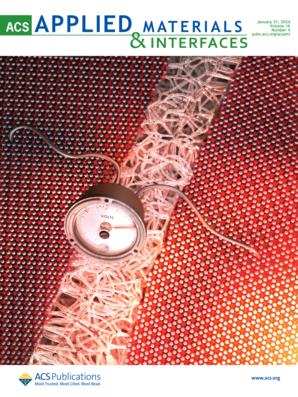低成本高性能双极有机正极材料的聚亚氨基蒽醌固相合成研究
IF 8.3
2区 材料科学
Q1 MATERIALS SCIENCE, MULTIDISCIPLINARY
引用次数: 0
摘要
有机聚合物正极材料已成为构建可持续锂电池和后锂电池的有希望的候选者。然而,如何以经济有效的方式合成具有所需能量密度和循环稳定性的电活性聚合物仍然是一个重大挑战。在此,我们提出了一种简单而有效的固相方法来合成一系列双极性醌-胺聚合物,特别是聚亚氨基蒽醌(PIAQs)。低成本二氨基蒽醌和二羟基蒽醌单体的氨基和羟基在350°C下发生脱水缩聚反应,得到四个具有相同重复单元但连接模式不同的PIAQ样品。作为采用酯型电解质的锂电池正极材料,它们在1.5-4.3 V范围内具有相似的充放电曲线和能量密度,但循环稳定性随聚合度的变化而变化。例如,尽管它是成本最低的单体,PIAQ-44在聚合物正极材料中表现出最出色的电化学性能之一,具有248 mA h g-1的可逆容量,2.53 V的平均放电电压和高循环稳定性(循环2000次后容量保持75%)。此外,四种piaq在双极性氧化还原、不可逆去质子化和容量衰减方面的电化学性能的细微差异已经被彻底阐明,为醌-胺聚合物提供了建设性的见解。本文章由计算机程序翻译,如有差异,请以英文原文为准。
Solid-Phase Synthesis of Poly(imino anthraquinone)s for Low-Cost and High-Performance Bipolar Organic Cathode Materials
Organic polymer cathode materials have emerged as promising candidates for constructing sustainable lithium and post-lithium batteries. However, it remains a significant challenge to synthesize electroactive polymers with the desired energy density and cycling stability in a cost-effective manner. Herein, we present a simple yet effective solid-phase method for synthesizing a series of bipolar quinone-amine polymers, specifically, poly(imino anthraquinone)s (PIAQs). The dehydration polycondensation reaction, occurring at 350 °C between the amino and hydroxy groups of low-cost diaminoanthraquinone and dihydroxyanthraquinone monomers, yields four PIAQ samples with identical repeating units but varied connection patterns. As cathode materials for lithium batteries employing ester-type electrolytes, they exhibit comparable charge–discharge curves and energy densities within 1.5–4.3 V but varying cycling stabilities proportional to their polymerization degrees. For example, despite its lowest-cost monomers, PIAQ-44 demonstrates one of the most outstanding electrochemical performances among polymer cathode materials, boasting a reversible capacity of 248 mA h g–1, an average discharge voltage of 2.53 V, and a high cycling stability (75% capacity retention after 2000 cycles). Moreover, the slight differences in electrochemical performance among the four PIAQs, pertaining to bipolar redox, irreversible deprotonation, and capacity fade, have been thoroughly elucidated to provide constructive insights into quinone-amine polymers.
求助全文
通过发布文献求助,成功后即可免费获取论文全文。
去求助
来源期刊

ACS Applied Materials & Interfaces
工程技术-材料科学:综合
CiteScore
16.00
自引率
6.30%
发文量
4978
审稿时长
1.8 months
期刊介绍:
ACS Applied Materials & Interfaces is a leading interdisciplinary journal that brings together chemists, engineers, physicists, and biologists to explore the development and utilization of newly-discovered materials and interfacial processes for specific applications. Our journal has experienced remarkable growth since its establishment in 2009, both in terms of the number of articles published and the impact of the research showcased. We are proud to foster a truly global community, with the majority of published articles originating from outside the United States, reflecting the rapid growth of applied research worldwide.
 求助内容:
求助内容: 应助结果提醒方式:
应助结果提醒方式:


